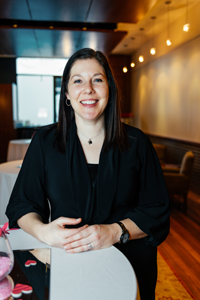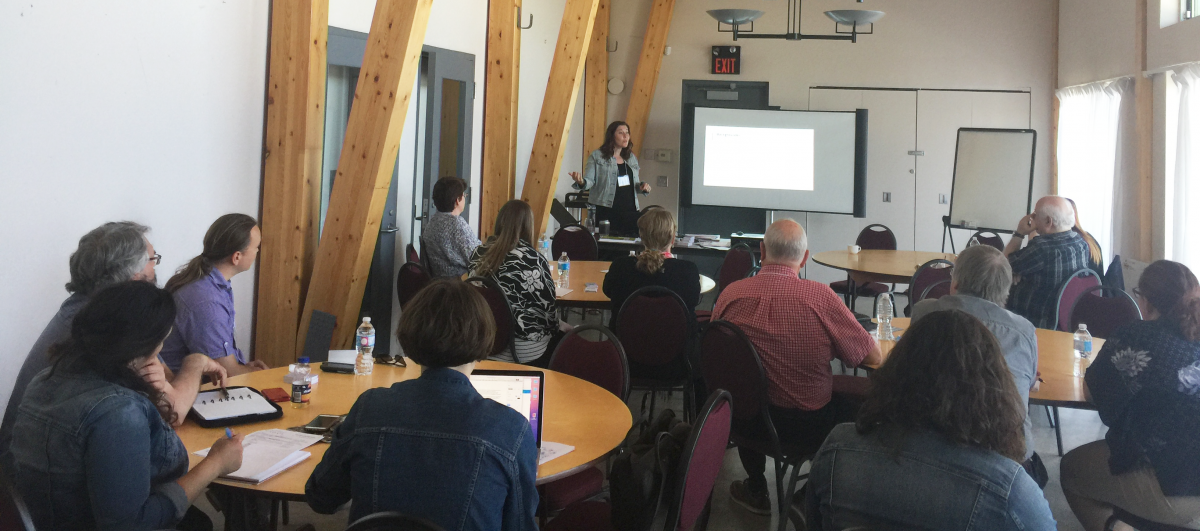June 27, 2016
- by Julie Fossitt, Marketing Manager, Cultural Services, City of Kingston
“Good marketing makes the company look smart. Great marketing makes the customer feel smart.” – Joe Chernov
It was the first time in several years that I had the opportunity to get together with some of the marketing staff from Ontario’s municipal performing arts centres (MPACs). What a relief to be in a room with others who are passionate not only about the arts, but about subscription renewal rates, email open rates, and get oddly excited about the smell of a freshly printed brochure.
Why is it that we marketers have such a damn hard time connecting with each other? We make relationship building with our patrons a priority, but can sometimes be shy at networking events or hesitant to pick up the phone and ask for advice or help. Or maybe that’s just me!
With most MPACs employing only one or two marketing staff, we don’t have much of a choice. We need each other to survive. We have to be one big team in order to sell tickets, take risks and keep succeeding… or figuring out while we fail.
At the Ontario Presents spring retreat June 22 and 23, a group of MPAC marketers got together to discuss market research, collaborative advertising buys and leveraging the brand of Ontario Presents.
The main issues that were discussed by the marketers were around ways to share data and best practices, and finding ways to defend decisions to either stop doing things that aren’t working or to try new things and measure their success.
Through its Community and Audience Mapping Analysis program, Ontario Presents is working with MPAC marketers to assist them to make data-driven decisions through market research. OP has a license with Environics Analytics, a marketing and analytical research company. The information is based on postal code data, and OP members are able to work with staff to discover a wide variety of information about their patrons.
The most valuable information that I have learned using Environics Analytics for the Grand Theatre:
- How far audience members drive to attend the theatre
- Where my audience lives
- What parts of the community are not attending the theatre
- What type of people go to different types of shows like country, comedy, classical music and where the similarities and differences are
- How my patrons consume media
- What type of social values my patrons have
This information helps me figure out the marketing mix, the messaging and most importantly, what I can stop doing to increase our return on investment. For example, even though some of our patrons still read the daily newspaper, so many of them consume a high amount of digital media, that we can reach them more efficiently through social media, specifically Facebook. This type of knowledge saves us money and give us insightful research into what ads and posts work based on the Facebook insights application.
This type of data can help you convince your board chair or executive director that you can start throwing out tactics that don’t work and focus on the ones that give you the biggest bang for your buck. Want to know more? You can check out my presentation on the Grand Theatre case study using Environics Analytics market research can be found here.
I have encouraged the participants to join the Ontario Presents Facebook group, so we can have a place to share presentations, survey data, ask questions, or potentially report on a recent success.
If you would like to connect with me, you can contact me through my website or through Twitter and Instagram @juliefossitt.
About Julie
 Julie Fossitt is the Marketing Manager for Cultural Services at the City of Kingston. The core services for this portfolio include targeted marketing, product development and pricing, partnerships, cultural tourism and the measurement of cultural participation. You can connect with her on Linked In, Twitter or Instagram.
Julie Fossitt is the Marketing Manager for Cultural Services at the City of Kingston. The core services for this portfolio include targeted marketing, product development and pricing, partnerships, cultural tourism and the measurement of cultural participation. You can connect with her on Linked In, Twitter or Instagram.


